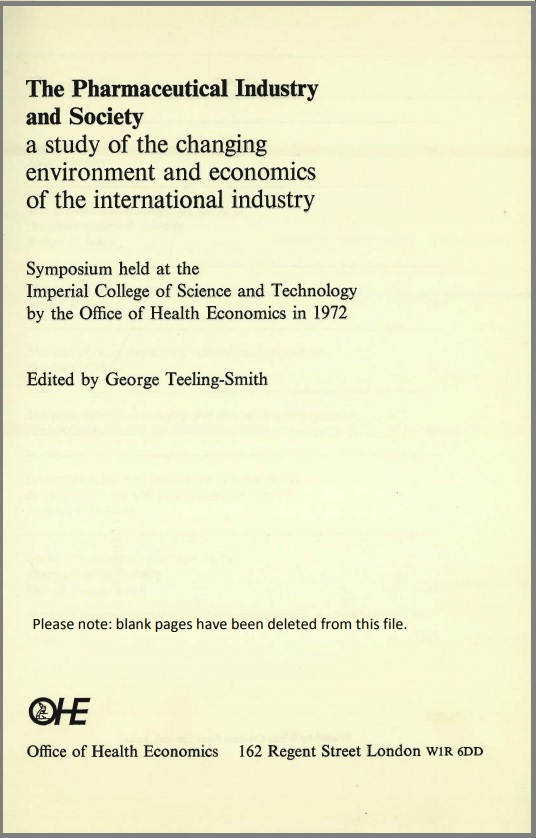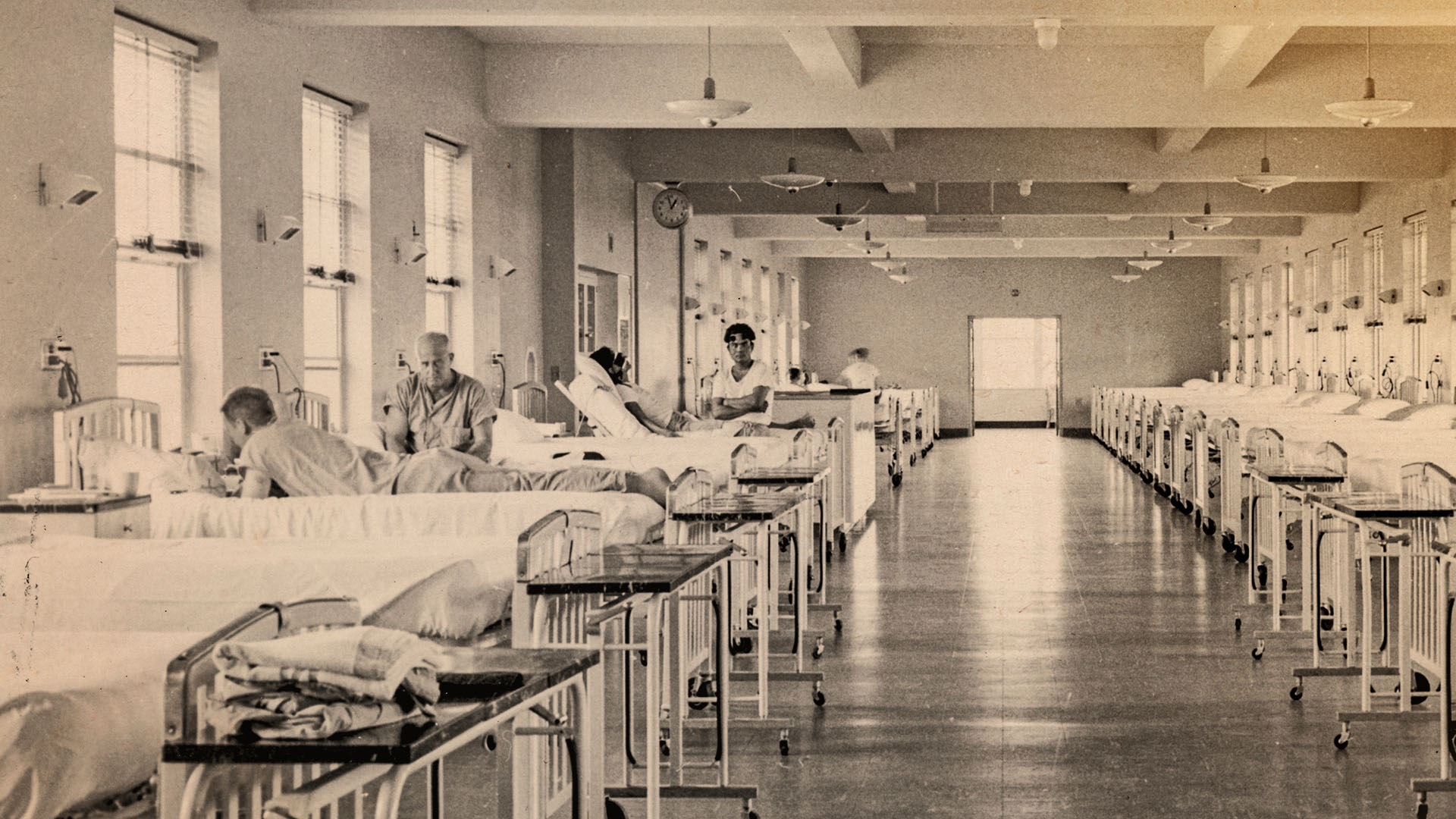Unlocking the Value of Combination Therapies

This paper is based on a symposium held at the Imperial College of Science and Technology by the Office of Health Economics in 1972.
Our ancestors died or recovered with or without the aid of a doctor: though his experience might be great…
This paper is based on a symposium held at the Imperial College of Science and Technology by the Office of Health Economics in 1972.
Our ancestors died or recovered with or without the aid of a doctor: though his experience might be great his technical skills were minimal. The doctor now is one of a large team that keeps us in good health and, indeed, often prolongs our life beyond what is reasonable. This change is due, ultimately, to research work in the natural sciences and largely to pharmaceuticals. The over-riding purpose of scientific research is nosiness; the over-riding purpose of medicine is recovery from or avoidance of illness; yet both over-riding purposes are subordinated to the practical test of what society, and the families that make up society, is prepared to pay. There is little doubt that the astounding changes in medicine have been largely due to pharmaceuticals. Here, then, is an industry that began with virtual quackery, that is now at the heart of modern scientific research, in pharmacology, biochemistry and related subjects, and which is a major supplier of a large sector of public and private health provision. It is a new industry – newer than aviation and little older than electronics – and we know comparatively little about it.
This series of essays is designed to show how the industry has shaped itself in response to the vastly rising demand for its products and the continuous surge of experimentation which provides its basis. In so doing, the series reveals certain key facts about the industry which, though of deep interest to people connected with pharmaceuticals, ranging from pharmacists to doctors, from public officials to individual patients, are also of general interest to economists, businessmen and trades unionists and others concerned with modern industry. Pharmaceuticals is the model of one kind of a modern industry. It is built, first, upon continuous technical change. It has, next, to communicate this change to a series of specialised buyers such as hospital procurement officers and doctors and ultimately to the general public, who, after all, pour its products down their throats and other available orifices. It has a major public responsibility. This responsibility is direct, for its products may maim as well as cure, and it needs to be carefully watched. Its responsibility is indirect, too. The birth-control pill, for instance, has basically altered demographic patterns; the virtual elimination in some areas of malaria and other tropical diseases has caused a population explosion; that is to say the environmental and ecological effects are important. It is international, like science itself and as a result the study of a ‘national’ industry makes little sense, a point well brought out by Robert Jones in the first lecture. It is not extremely capital-intensive, but the production process is very ’round-about’, and it employs a small but extremely highly-trained and expensive labour force. Lastly, almost everybody outside it is deeply suspicious of it.
Conclusion
A number of questions are seriously raised by this series of lectures. The first is, how fast and how far successful research in pharmaceuticals ought to be pursued. There is clearly a growing backlash of people who feel that ‘nature ought to be left to itself’. I must say openly and directly that I am not one of this number. I believe that only the very rich or middle class people can afford the luxury of thinking about macrobiotic diets, and those who have seen the poverty of our great cities, not to speak of the poverty of Asia, will realise exactly how much in terms of ordinary human happiness has been added to the world by the series of technological advances, of which pharmacology is one, in the last half-century. Furthermore, what is within grasp is the cure to a number of diseases of extreme hideousness, including cancer, and it must be thought that this therapeutic revolution would win the support of the great majority of our fellow-citizens anywhere on this planet. Secondly, it seems as though the desire for safety in drugs has at the moment gone too far, and that the time may be coming when there might well be a slight swing back of the pendulum, not very far back, but slightly, because the benefits to be gained from the use of new drugs so greatly outdistance the small number of tragedies to which they give rise. And in addition, when it is considered that a great many medical procedures at present undertaken undoubtedly do more harm than good, some surgery being an example, it is realised what an imbalance there is in our present procedures for monitoring drugs compared with the majority of other things.
This then raises certain central questions. The first is, what price should be paid for drugs? To which obviously the answer is, the cost of their production, plus a reasonable level of profit. This then raises the further question of what is the reasonable level of profit. Hitherto, the main argument for higher profits in pharmaceuticals, other than the normal return on capital, which is expected to be earned both in public and private enterprises, is that the profits are ploughed back into research and development. It is by no means self-evident that the research and development has to be undertaken out of profits. It could be conducted, for example, entirely at public expense in National Health Service laboratories. On the other hand, it has to be said that so far successful research has been associated with privately-owned corporations, perhaps because there are no publicly-owned pharmaceutical corporations outside the Eastern Bloc countries. And it also has to be said that the therapeutic revolution has not only saved and ameliorated many millions of lives, it has also, in sheer economic terms, saved the health service many, many millions of pounds. It therefore follows that there is some justification for believing that supernormal profits, if used in research, do in fact lead effectively to important long run benefits. But it is also clear that it is very difficult to put this on any rational basis according to the accounting and economic techniques at present available. We are therefore unable to give any firm and detailed conclusion about the desirable structure of the industry in relation to overall needs, except perhaps to suggest that the suspicions under which the industry has laboured for many years have so far not been very justified, and that it is probable that the level of research, if kept up, is likely to lead to further breakthroughs in therapeutic advance which would be well worth the money spent on them.
There is urgent need for a much more careful investigation of the structure of the pharmaceutical industry in order to see what its investments and pricing policies ought to be, but at the moment it must be said that a verdict of ‘not guilty’ must be returned on many of the charges that have been levied against the industry, and that in some respects a major vote of thanks must be paid to it for having supported the therapeutic revolution.
One final doubt, however, does remain, and this is an area where further research would be particularly interesting, and that is, what is the connection between money spent on research and development and subsequent innovation? My own judgement, after listening to these lectures and reading around the subject, is that during the latter part of the 19th century the German chemical industry and German chemical research blossomed together, that sometime during the early part of the 20th century the results of this chemical research were dispersed into a number of other countries, partly by ordinary migration, but mainly by the forced dispersal of émigrés after the coming to power of Hitler, and that for some reason or other this chemical expertise went into the field of pharmacology, leading to the outstanding discoveries of the 1930s, 1940s and 1950s. It certainly seems, from discussions with scientists, that this great burst of creativity has died down, though it has not yet petered out. Sciences do blossom and then die, and there is no logical or historical reason why this should not happen in pharmacology. But this is to enter very deep waters indeed, and waters which are extremely difficult to investigate.
Pharmaceutical Industry and Society: a Study of the Changing Environment and Economics of the International Industry
Teeling Smith, G. ed.
(1972) Pharmaceutical Industry and Society: a Study of the Changing Environment and Economics of the International Industry. OHE Monograph. Available from https://www.ohe.org/publications/pharmaceutical-industry-and-society-study-changing-environment-and-economics/

